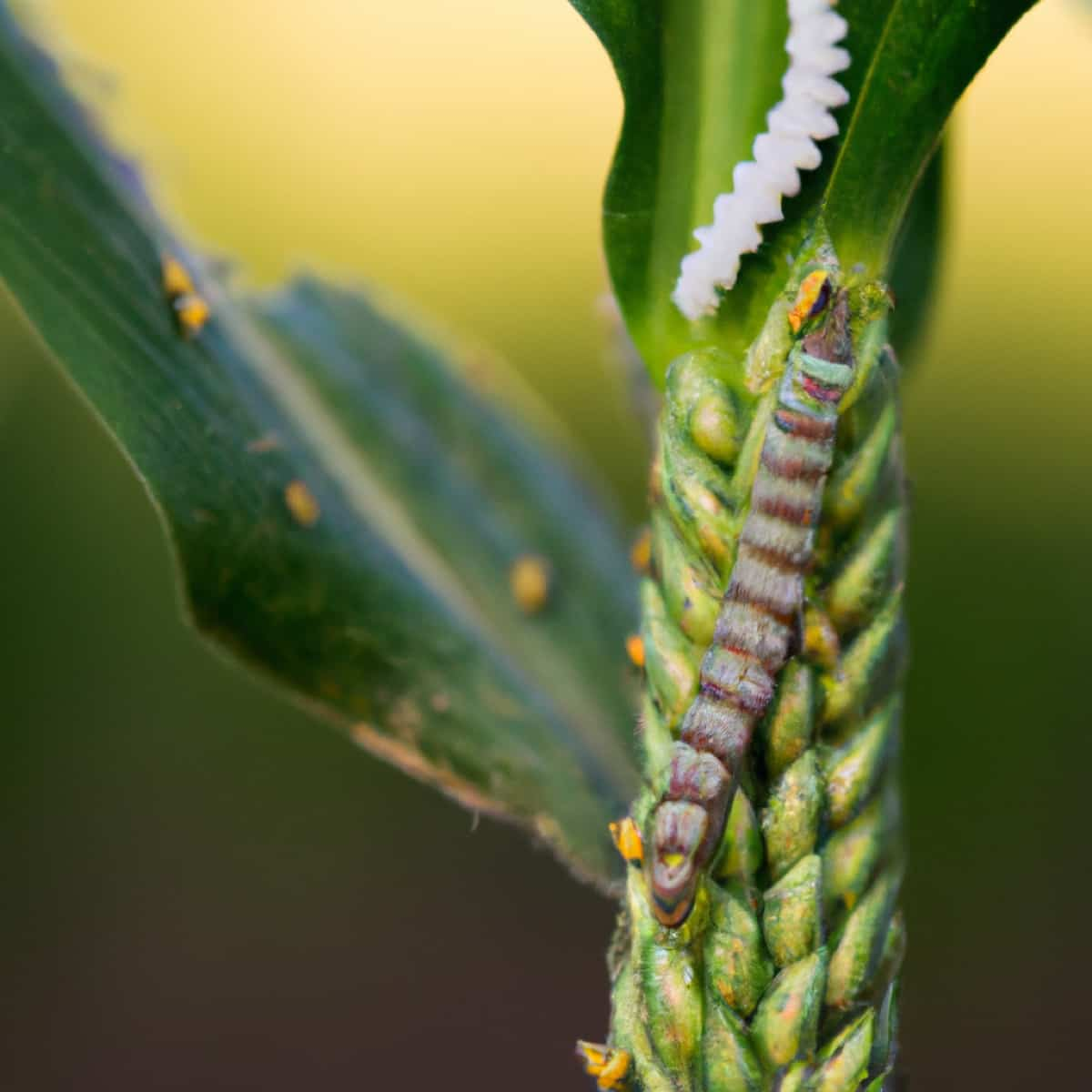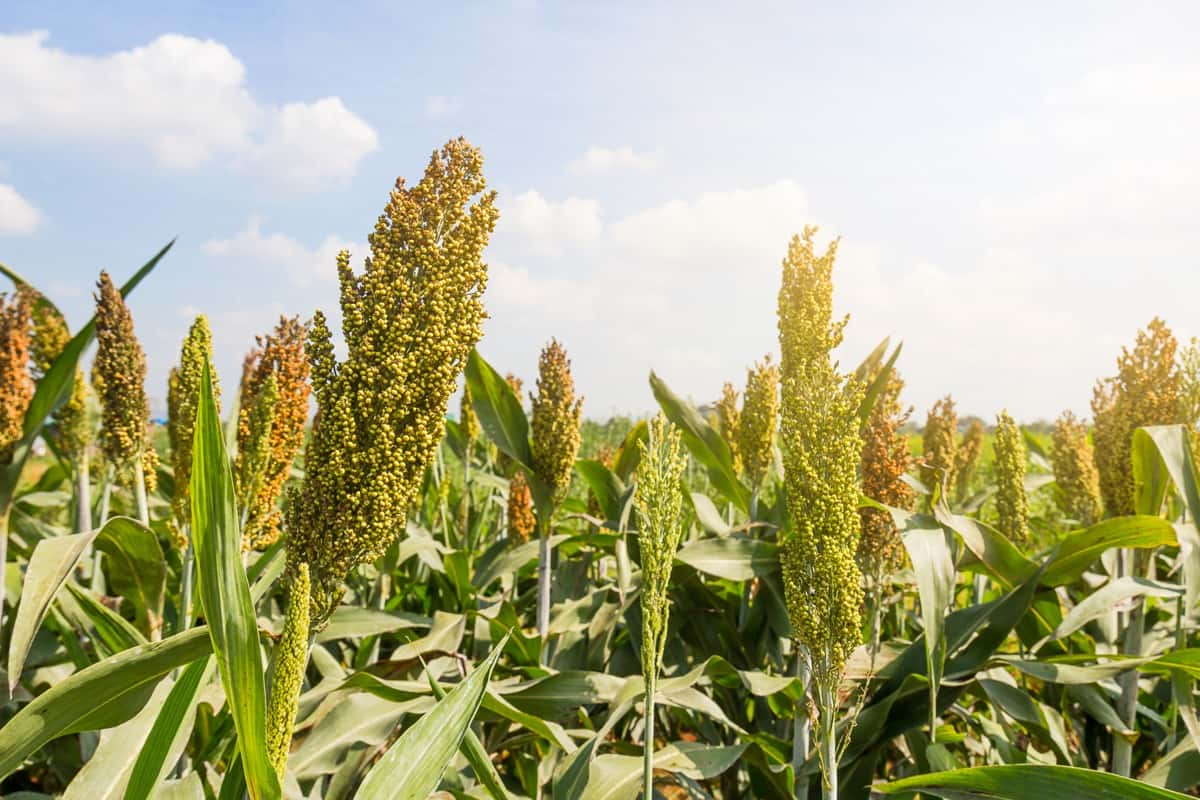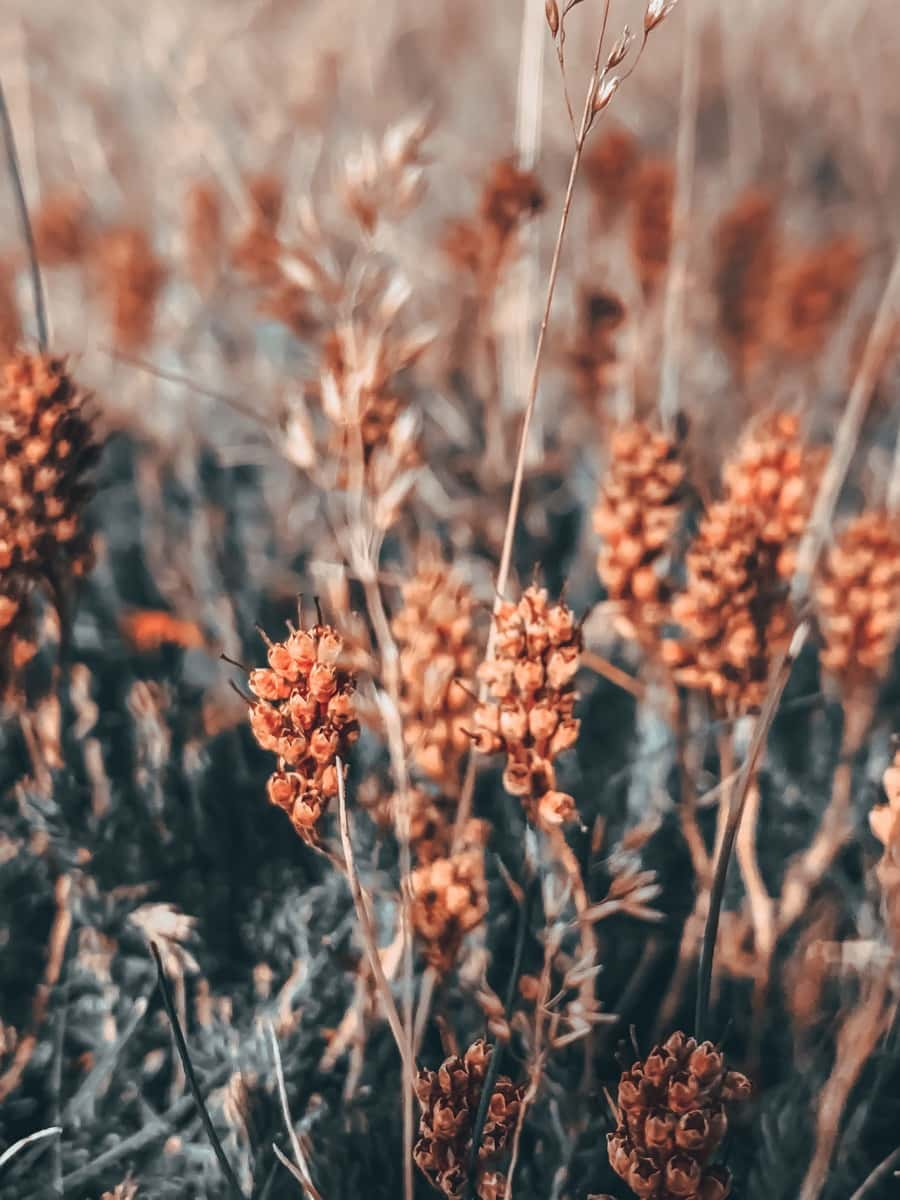Sorghum ear head caterpillar, Helicoverpa armigera, Family Noctuidae, Order Lepidoptera, or Gram Caterpillar, is a polyphagous pest, it feeds on a variety of plants, but its primary host is sorghum. It feeds on the heads, stems, flowers, and young leaves and can cause considerable damage if left unchecked.

If the infestation is severe, the crop can be completely lost. To effectively manage this pest, it is important to understand its life cycle, its preferred habitats, and the best methods for controlling it. This article will provide information on the sorghum stem borer pest, including its symptoms, identification techniques, and control.
Ear Head Caterpillar Management in Sorghum
Life Cycle of Sorghum Ear Head Caterpillar
The lifespan includes egg, larva, pupa, and adult. The female moth lays eggs on sorghum plants, inflorescences, or leaf undersides. They hatch into first-instar larvae after 1-2 weeks. Blackheads and short hairs cover these yellowish-green larvae. They feed on sorghum foliage and may bore into cobs, ears, and tassels, causing significant harm.
Before pupation, larvae molt three times. They will grow bigger, darker green, and have long hair. They will also eat more leaves and bore into cobs and ears. In India, the sorghum ear head caterpillar is most busy during flowering and grain-filling. Larvae make silken cocoons to become moths after pupation. Adult moths bond and lay eggs, restarting the cycle. The sorghum ear head caterpillar’s life cycle can last one month or three months in cooler regions.
Occurrence of Sorghum Ear Head Caterpillar
- Location of Sorghum Shootfly: The pest occurs in South India, USA, and Western Africa.
- Host range: The pest can cause an infestation in Cotton, sorghum, lab, soybean, pea, safflower, chilies, tomato, groundnut, tobacco, gram, okra, and maize.
Identification of Sorghum Ear Head Caterpillar in Sorghum field
- Egg: Creamy white, spherical, laid in solitary.
- Larva: The color ranges from brown to green, with deep brown-grey lines on the body with lateral white lines.
- Pupa: It persists in soil, leaf, pod, and crop debris and is brown.
- Adult: Moth is pale brownish yellow, stout. Forewings are ovoid to pale brown with a deep brown circular spot in the center. Hindwings are pale smoky white with a broad blackish outer margin.
Damage Symptoms of Sorghum Ear Head Caterpillar in Sorghum field
- The caterpillars partially consume earheads. Presence of small holes in the husks of the sorghum ears. The caterpillar causes these holes as it feeds on the seed.
- Caterpillars may also form webs around the ears and exhibit a chalky appearance.
- Presence of frass, or caterpillar droppings, on the lower side of the ear. These droppings are a sign that the caterpillar is present and actively feeding. Frass may also contain bits of husks and grain, which further indicates feeding.
Percentage of Yield Lose in Sorghum due to Sorghum Ear Head Caterpillar
Generally, In India, losses due to this pest can be as high as 25-50% in severe infestations. The losses are greater when the infestation is combined with other pests, such as stem borers, aphids, and leafhoppers. And, Economic Threshold Level is 2 per Earhead.
In case you missed it: Rust Disease Management in Sorghum: Symptoms, Treatment, Chemical, Biological, Natural, and Organic Control

Cultural Control of Sorghum Ear Head Caterpillar
- Sanitation – Sanitation is a key component of IPM. It requires the removal of crop residue, weeds, and weeds that serve as hosts for the pest.
- Planting date: Planting new crops earlier or later than normal can reduce the pest population in the field.
- Plant spacing: Planting sorghum plants farther apart can reduce the number of SEHC found in the field.
- Light trap – Employ a light trap till midnight to attract and kill the stem borer moths, grain midge, and earhead caterpillars.
- Pheromone trap – Employ pheromone traps at 12/ha to attract male moths of Helicoverpa armigera from flowering to grain hardening.
Biological Control of Sorghum Ear Head Caterpillar
- Egg parasitoid Trichogramma pretiosum kills sorghum ear head caterpillars. This small wasp lays its eggs inside caterpillar eggs, stopping them from hatching. Trichogramma pretiosum can be bought and spread on sorghum crops to control caterpillars.
- Trichoplusia ni parasitizes sorghum ear head insect larvae. This parasitoid puts its eggs inside the caterpillar, where the wasp larvae kill it. Commercially available Trichoplusia ni can manage caterpillars on sorghum crops.
- Parasitoids like Trichogramma pretiosum and Trichoplusia ni can control sorghum ear head larvae sustainably.
Chemical Control of Sorghum Ear Head Caterpillar
- Two applications of NPV at ten days interval at 1.5 X1012 POB along with simple sugar 2.5 kg + cotton seed kernel powder 250 g on the earheads reduces the larval population of Helicoverpa.
- Apply Carbaryl 10 D @ 25 kg/ha, Malathion 5 D @ 25 kg/ha, or Phosalone 4 D @ 25 kg/ha on the 3rd and 18th day after panicle emergence.
Preventive Measures for Control of Sorghum Ear Head Caterpillar
- Crop rotation improves soil fertility, reduces weeds, and reduces pesticide use.
- Hand-picking or shaking plants reduces caterpillar outbreaks. Early in the season, hand-pick larvae.
- Shaking plants can remove larvae from bigger infestations. Weeding, irrigation, and fertilization lower populations.
- Irrigation reduces grass dust. Fertilization reduces dust and improves plant health, making larvae less attracted
In case you missed it: Stem Borer Management in Sorghum: Symptoms, Treatment, Chemical, Biological, Natural, and Organic Control

Conclusion
The sorghum ear head caterpillar can hurt crop yields, but this can be lessened by growing sorghum and using biological control methods like parasitoid wasps, predatory moths, botanical insecticides, and resistant sorghum varieties. Farmers can protect their crops from pests using fewer synthetic chemicals if they take a holistic approach to pest control.
- Beneficial Insects in Pest Management
- Natural Solutions for Pest Control in Flower Gardens
- Types of Fungicides Used in Agriculture
- Common Issues in the Fruit Development Stage of Pomegranate Farming
- Fruit Development Issues in Papaya: Easy Solutions and Treatment
- Soil-Borne Diseases and How to Protect Your Plants
- Practices to Prevent Disease Spread in the Garden
- From Wilted to Thriving: How to Treat Root Rot Naturally in Houseplants
- Natural Remedies to Cure Brown Spots on Fig Tree Leaves